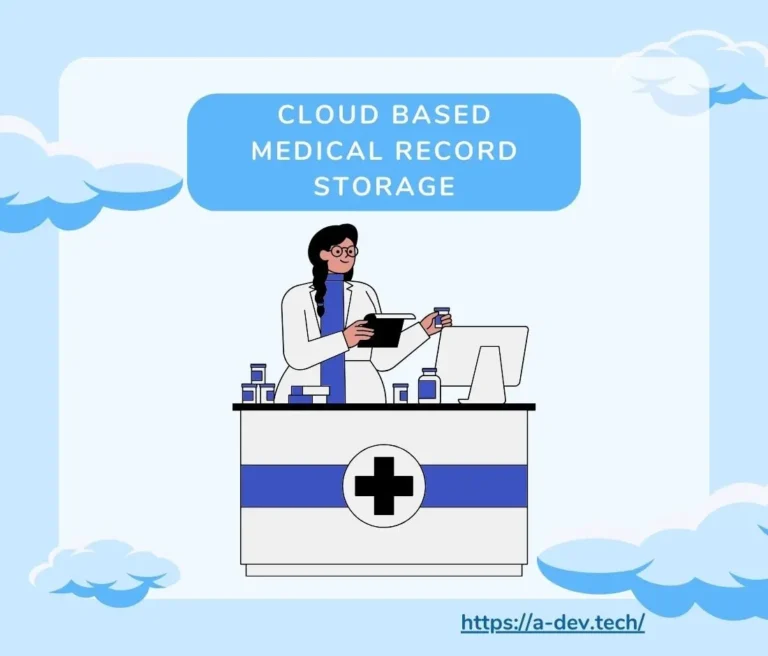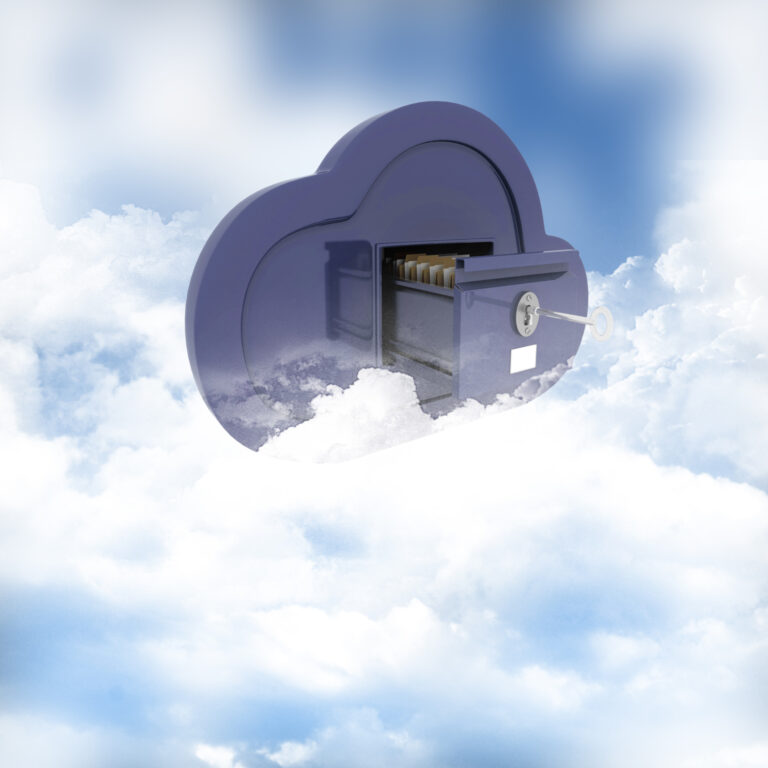Safeguarding Your Business Continuity in the Digital Age: Cloud DR as the Lifeline
In today’s digital world, data reigns supreme. It’s the lifeblood of countless organizations, with business operations heavily reliant on the constant availability and integrity of this critical information. Disruptions caused by natural disasters, cyberattacks, or even hardware failures can have a devastating impact, leading to significant downtime, financial losses, and reputational damage.
This is where Cloud Disaster Recovery (DR) emerges as a powerful solution, offering a robust strategy for ensuring business continuity in the face of unforeseen events. It empowers organizations to maintain continuous access to their business-critical data, even during disruptions.
For a comprehensive overview of cloud computing’s potential and how it can empower your business, you can refer to this informative guide: https://a-dev.tech/unveiling-the-power-of-cloud-tools-a-comprehensive-guide/.
A-Dev, your trusted cloud management services provider, understands the critical role cloud DR plays in safeguarding your organization’s future. We can help you navigate the complexities of cloud DR solutions and implement a comprehensive strategy that aligns perfectly with your specific business needs.
This article delves into the world of Cloud DR, exploring its key functionalities, site options, and the planning process required to build a resilient disaster recovery plan. By leveraging the power of cloud platforms like Google Cloud Platform or Microsoft Azure, cloud DR offers several advantages over traditional DR approaches:
- Scalability: Cloud DR solutions can be easily scaled up or down based on your evolving needs, ensuring you only pay for the resources you require.
- Cost-Effectiveness: Compared to traditional DR with its high upfront costs for dedicated facilities, cloud DR offers a more scalable and cost-effective solution, often following a pay-as-you-go model.
- Reduced Complexity: Cloud DR solutions can significantly simplify DR implementation and management. Cloud providers handle many of the underlying tasks, freeing your IT staff to focus on core business functions.
- Faster Recovery: Cloud DR enables streamlined recovery processes, minimizing downtime and ensuring a swift return to normal operations.
Let’s explore further how cloud DR empowers organizations to achieve business continuity in today’s ever-changing digital landscape.
Understanding Cloud Disaster Recovery

Source: Freepik
Cloud Disaster Recovery (Cloud DR) is a comprehensive strategy that leverages cloud technologies to ensure business continuity in the face of unforeseen events. Unlike traditional disaster recovery (DR) approaches that often require maintaining a dedicated secondary data center, cloud DR offers a more flexible and cost-effective solution.
This section dives into the core concepts of cloud DR and explores its foundational aspects:
Cloud DR vs. Traditional DR: Choosing the Right Path for Business Continuity
When it comes to safeguarding your business against unforeseen disruptions, Disaster Recovery (DR) plays a vital role. Traditionally, organizations relied on physical secondary data centers to ensure business continuity. However, the landscape has shifted significantly with the emergence of cloud disaster recovery. Let’s delve into the key differences between these two approaches to help you decide which best suits your organization’s needs.
Traditional DR: A Fortress with High Costs
The traditional disaster recovery method involves establishing a physical backup site – a replica of your primary location. This replica houses mirrored data and infrastructure, ensuring a seamless transition in case of a disaster at the primary site. While offering a high degree of control and security, this approach comes with significant drawbacks.
The upfront investment required to build and equip a dedicated secondary facility can be substantial. Furthermore, ongoing maintenance costs for the physical infrastructure add to the financial burden. Traditional DR also faces limitations in scalability. Expanding the disaster recovery capacity often necessitates physically expanding the secondary data center, which can be a cumbersome and time-consuming process.
Cloud DR: Agility, Scalability, and Cost-Effectiveness
Cloud DR, on the other hand, leverages the power and flexibility of cloud computing to create a disaster recovery environment. Data from your primary location (primary data center) is replicated to the cloud infrastructure of a cloud provider. This approach offers several advantages over traditional disaster recovery.
Cloud DR eliminates the need for managing a physical secondary data center. By outsourcing disaster recovery to a cloud provider, you can significantly reduce upfront costs and ongoing maintenance expenses (operational expenditure). Cloud services typically follow a pay-as-you-go model, allowing you to scale your computing resources up or down dynamically based on your evolving needs. This inherent scalability ensures that your disaster recovery capabilities can readily adapt to your business growth.
Recovery times are often faster with cloud disaster recovery compared to traditional methods. Cloud providers offer robust infrastructure and bandwidth, facilitating quicker data restoration and application failover in a disaster event. Additionally, cloud DR solutions can benefit from the inherent security features and global reach offered by cloud providers.
Cloud DR Functions: A Comprehensive Approach
Cloud DR solutions provide a comprehensive set of functionalities that empower you to build a robust disaster recovery strategy. Here are some of the key elements that contribute to a strong cloud disaster recovery approach:
- Backup and Disaster Recovery: Cloud DR solutions provide secure data backup to the cloud, ensuring your business-critical application data is protected against potential disasters. Regular backups minimize data loss in the event of a disaster.
- Replicating data: Cloud DR facilitates replicating your data to the cloud provider’s infrastructure, typically across multiple data centers for added geo redundancy. This ensures a readily available copy of your data for quick recovery.
- Disaster Recovery Planning: Cloud disaster recovery providers often offer tools and expertise to assist with developing a comprehensive DR plan. This plan should detail the steps required to recover your IT infrastructure and application software in a timely manner.
- Testing: Regularly testing your DR plan is crucial to ensure its effectiveness. Cloud DR solutions often provide tools or support for automated testing procedures, ensuring your DR processes are functional.
- Recovery Process: In the event of a disaster, cloud DR facilitates a streamlined recovery process. This process involves restoring your backed-up data and applications to a fully functional environment within the cloud provider’s infrastructure. Cloud DR solutions leverage the power of geographically multiple data centers (geo redundancy) to ensure a readily available copy of your data. This redundancy minimizes the risk of a single disaster impacting your recovery capabilities. Additionally, cloud DR solutions often automate various aspects of the recovery process, minimizing downtime and expediting your return to normal operations.
Making Disaster Recovery Accessible
Cloud DR offers several advantages that make disaster recovery solutions more accessible to businesses of all sizes:
- Cost-Effectiveness: Compared to traditional DR with its high upfront costs and ongoing maintenance, cloud DR offers a more scalable and cost-effective solution (pay-as-you-go model).
- Scalability: Cloud DR resources can be easily scaled up or down based on your business needs, allowing you to optimize your cloud spending.
- Reduced Complexity: Cloud DR solutions significantly simplify DR implementation and management. By handling many of the underlying tasks, cloud providers free your IT staff to focus on core business functions. This eliminates the need for your team to manage complex DR procedures, allowing them to dedicate their expertise to more strategic initiatives.
Benefits of Cloud DR:
- Business Continuity: Cloud DR ensures critical applications and data remain accessible even during outages, minimizing downtime and potential financial losses. Businesses can resume operations quickly with insighnificant disruption.
- Cost-Effectiveness: Compared to traditional DR, cloud DR eliminates the need for a dedicated recovery site and associated maintenance expenses. Cloud providers offer scalable resources, allowing businesses to optimize costs by only paying for what they use.
- Scalability: Cloud environment can be easily scaled up or down to meet recovery needs. This flexibility ensures sufficient capacityof cloud resources to handle a disaster, allowing businesses to recover critical workloads quickly.
- Geographic Redundancy: Cloud providers maintain data centers in geographically dispersed locations. This minimizes the risk of a single disaster impacting both primary and secondary sites, offering high availability of data and applications.
- Security: Cloud providers offer robust security measures to protect data stored in their environments. Regular security audits and compliance certifications ensure data remains protected.
Cloud DR Services:
Many cloud service providers offer Disaster Recovery as a Service (DRaaS) solutions. These pre-configured and managed services simplify cloud DR implementation and ongoing management. Businesses can leverage the DRaaS expertise of cloud service providers, reducing the burden on internal IT teams.
Understanding these fundamental aspects of cloud DR empowers businesses to make informed decisions about adopting this approach. Cloud DR safeguards data and ensures operational continuity in the face of potential disruptions. The next sections will delve deeper into Cloud DR strategies, exploring different approaches to choose the right fit for your organization’s specific needs.
Cloud Disaster Recovery Strategies: Securing Your Business with the Right Approach

Source: Freepik
Now that we’ve grasped the fundamentals of cloud DR, let’s delve into selecting the optimal strategy to safeguard your critical business data and applications.
Minimizing Data Loss with Recovery Point Objective (RPO)
The Recovery Point Objective (RPO) is a fundamental concept in cloud DR planning. It defines the maximum acceptable currency of your data backups. In simpler terms, it determines how much recent information you’re willing to sacrifice in a disaster scenario. A lower RPO signifies more frequent data replication, minimizing the potential for outdated information but potentially increasing cloud storage costs.
Here’s a key consideration: striking a balance between RPO and cost. While a very low RPO minimizes the risk of having outdated information, it can lead to significant storage expenses due to the constant replication of vast amounts of data. Conversely, a higher RPO reduces storage costs but increases the potential for relying on less recent data during a disaster.
Finding the RPO Sweet Spot: Carefully assess your business needs. How much data loss can your organization tolerate in the event of a disruption? Analyze the financial impact of potential data loss compared to the cost of increased storage with a lower RPO.
Choosing the Perfect Cloud DR Strategy
The ideal cloud disaster recovery strategy hinges on your organization’s specific requirements, budget constraints, and risk tolerance. There are various approaches to consider, each offering unique advantages and drawbacks:
Cloud DR Site Options: Finding the Right Fit for Your Recovery Needs
Cloud DR offers several site options, each catering to different recovery needs and budgets. Understanding these options is crucial for crafting an optimal disaster recovery strategy.
Hot Sites: Prioritizing Speed at a Premium
Hot sites are continuously operational secondary environments that mirror your primary data center. This means applications are constantly running and data is synchronized in real-time. In the event of a disaster, failover to a hot site is near-instantaneous, minimizing disruptions to your business. This prioritizes speed but comes at a cost – maintaining a fully operational secondary site makes hot sites the most expensive option. Hot sites are ideal for mission-critical applications that require constant uptime, such as online transaction processing or real-time customer service platforms.
Warm Sites: Striking a Balance
Warm sites offer a balance between speed and cost. They have pre-provisioned infrastructure with replicated data ready for use. While applications aren’t actively running, data can be restored quickly. However, some configuration might be needed to get them fully operational. This faster recovery compared to cold sites comes at a lower cost than hot sites. Warm sites are well-suited for businesses seeking a balance and for applications that can tolerate some downtime during a disaster.
Cold Sites: Cost-Effective Option with Longer Recovery
Cold sites are the most cost-effective option due to the minimal infrastructure required. They primarily serve as secure storage locations for backups. Recovery times are the longest with cold sites, as data restoration and application configuration need to be completed after a disaster. However, this lower cost makes cold sites suitable for businesses with less critical data or applications that can tolerate longer downtime for recovery. Organizations with tight budgets might find cold sites an attractive option.
By carefully considering your recovery needs, specifically your recovery time objectives (RTOs), and budget constraints, you can choose the cloud DR site option that best aligns with your business’s specific situation.
Selecting the Right Approach: Tailoring Recovery to Your Business
The choice between hot, warm, and cold sites depends on several factors:
- Criticality of Data: For mission-critical applications requiring insignificant downtime, a hot site might be the best option.
- Budgetary Constraints: Cold sites offer the lowest cost, while hot sites require the most significant investment.
- Recovery Time Objective (RTO): This metric defines the acceptable amount of downtime after a disaster. A hot site minimizes RTO, while cold sites have longer recovery times.
- Industry Regulations: Certain industries have specific compliance requirements that may dictate your DR strategy. For example, healthcare providers might require a hot site for patient data protection.
By carefully evaluating these key phrases and tailoring your cloud DR strategy accordingly, you can ensure optimal protection for your critical business data and applications. Consider conducting a business impact analysis (BIA) to assess the potential impact of disruptions on different aspects of your operations. This will help you determine the acceptable RTO and choose the most suitable cloud DR site option.
Additional Considerations:
- Cloud Disaster Recovery Services: Many cloud service providers offer Disaster Recovery as a Service (DRaaS) solutions, providing a pre-configured and managed cloud DR environment. This option can simplify DR implementation and management for organizations.
- Multi-Cloud Environments: Some businesses might choose to leverage multiple cloud platforms for DR, offering additional redundancy and geographic dispersion.
By carefully evaluating your DR requirements and available resources, you can select the cloud DR strategy that best ensures operational continuity and minimizes potential disruption from disasters.
Conclusion: Securing Your Business Continuity with the Right Cloud Disaster Recovery Strategy
In today’s ever-evolving business landscape, safeguarding your critical data and applications from unforeseen disruptions is paramount. Cloud Disaster Recovery solutions offer a compelling alternative to traditional disaster recovery methods, providing a robust and adaptable approach to operational continuity planning.
By leveraging the scalability and cost-effectiveness of cloud services, cloud DR empowers businesses of all sizes to implement comprehensive disaster recovery strategies. Cloud DR functions such as secure data backup, replication, and automated recovery processes minimize data loss and ensure a swift return to normal operations in the event of a disaster.
Choosing the ideal cloud disaster recovery site option depends on your organization’s specific requirements. Hot sites prioritize speed with minimal downtime but come at a premium cost. Warm sites offer a balance between speed and affordability, while cold sites provide the most cost-effective option with extended recovery times. A thorough disaster recovery planning process, including a business impact analysis (BIA), will help you determine your acceptable recovery time objective (RTO) and select the most suitable cloud DR site option.
By carefully considering your business needs and aligning them with the functionalities and site options offered by cloud disaster recovery solutions, you can ensure optimal protection for your critical data and applications. Cloud DR empowers you to navigate disruptions with confidence, minimizing downtime and safeguarding your business continuity.





